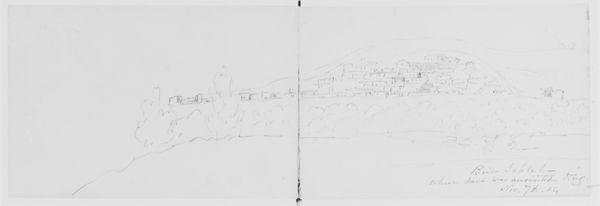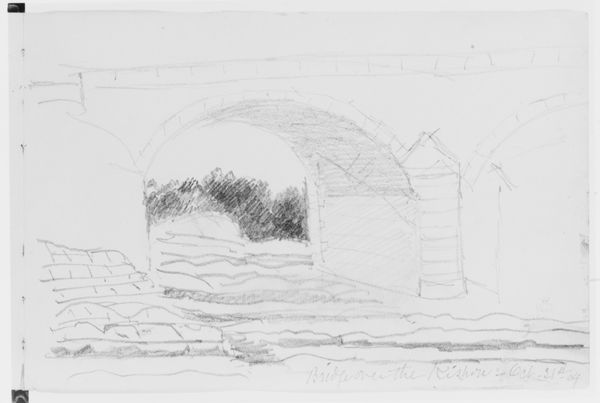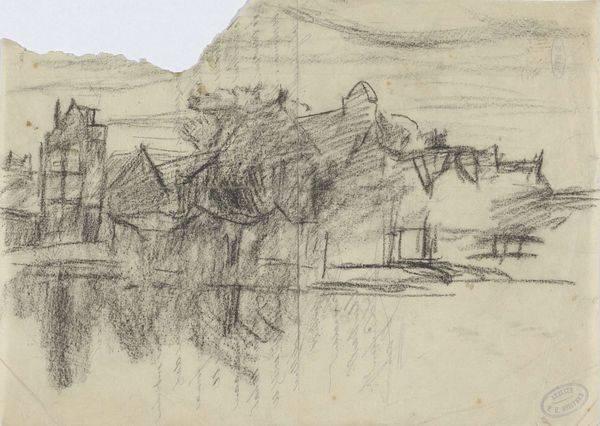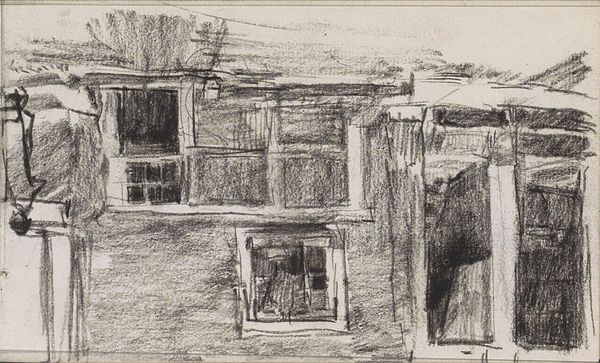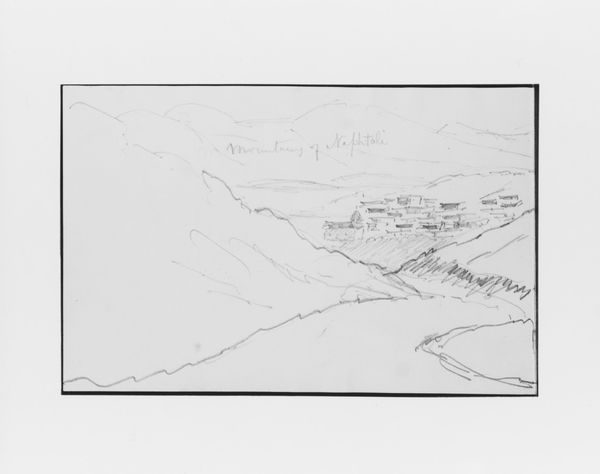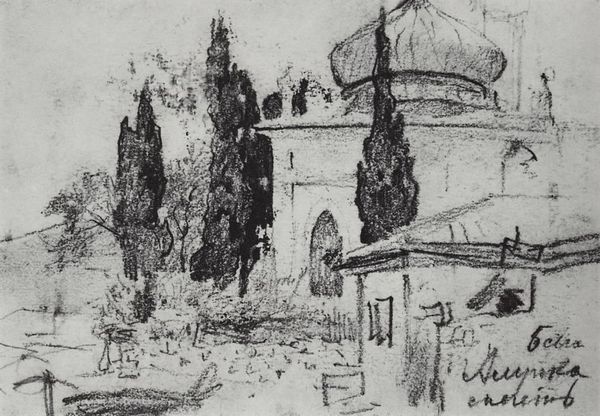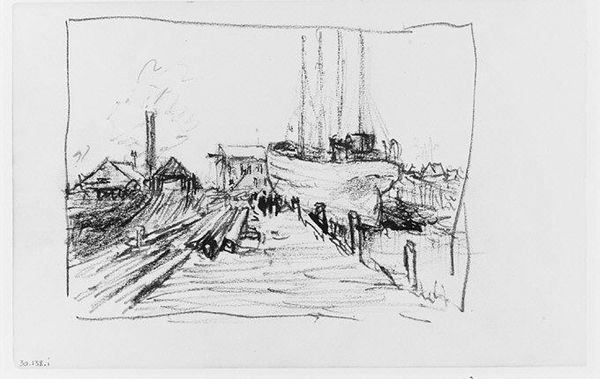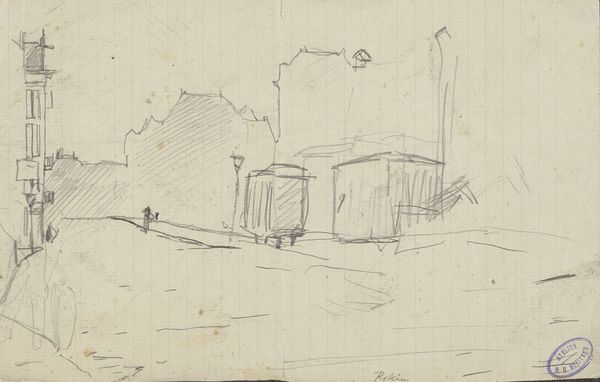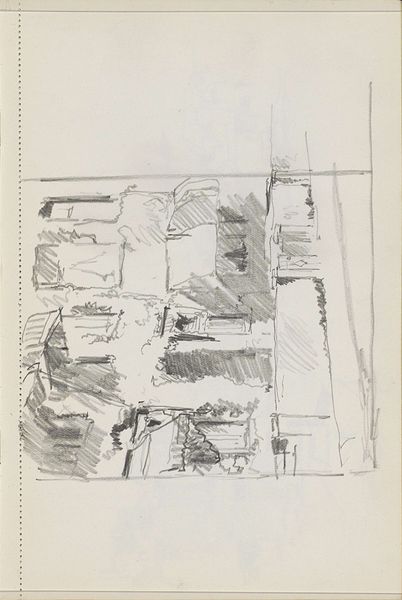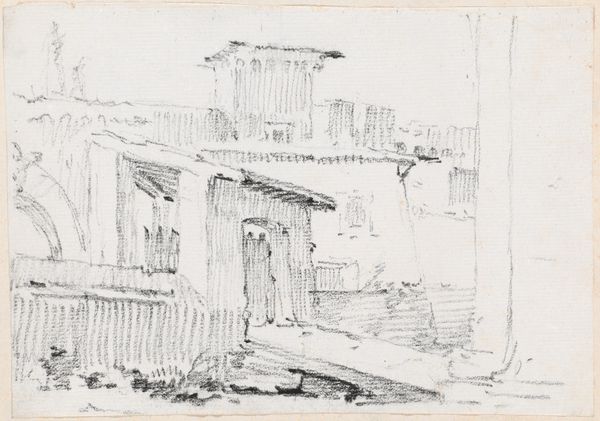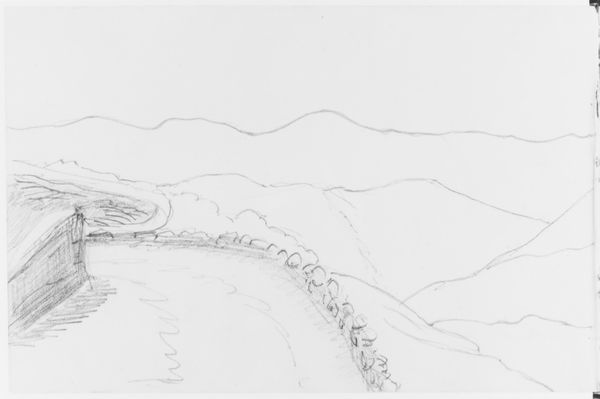
drawing, pencil
#
drawing
#
amateur sketch
#
thin stroke sketch
#
incomplete sketchy
#
hand drawn type
#
landscape
#
linework heavy
#
sketchwork
#
ink drawing experimentation
#
pen-ink sketch
#
pencil
#
thin linework
#
academic-art
#
realism
#
initial sketch
Dimensions: 5 7/8 x 8 5/8 in. (14.9 x 21.9 cm)
Copyright: Public Domain
Curator: This is Mary Newbold Sargent's "Apostle's Well" from 1904, a pencil and ink drawing currently residing at the Met. It strikes me as a quickly rendered travel sketch, but what captures your attention? What do you see in this piece? Editor: It does seem like a fleeting moment captured on paper! I’m intrigued by the visible sketch lines. It feels almost unfinished. How do you interpret the significance of the artistic process being so visible in the final piece? Curator: Excellent question. Let’s consider the material reality of artistic creation. The visible process undermines any sense of transcendent artistic genius. This wasn't some divinely inspired masterpiece created effortlessly; it's a product of labor, a specific application of pencil and ink, susceptible to revision. The "unfinished" quality is less about aesthetic failing and more about exposing the raw mechanics of image-making. What was Sargent trying to say about the location itself by quickly capturing this specific perspective in time using locally accessible materials? Editor: That's a very interesting perspective. It’s as though she’s not trying to create an idealized view but to document her own interaction with this space. But why use art to depict this well, instead of simply writing down her memories about visiting this place? Curator: Exactly. This drawing implicates her – the artist, the observer – in the scene itself. The landscape isn't a pristine, objective reality; it's mediated by Sargent's own presence, her choices about composition, her skill in manipulating the materials. Perhaps the rapid style conveys her positionality as an American experiencing a different environment. Ultimately, the value in this isn’t in capturing the “true” nature of this “Apostle’s Well” itself but the perspective through her unique combination of access to time, art materials, and skills. Does that shift your thinking at all about landscape drawings? Editor: It really does! I never thought about a landscape being as much about the artist as it is about the place. Thanks, this has been a truly helpful view.
Comments
No comments
Be the first to comment and join the conversation on the ultimate creative platform.
